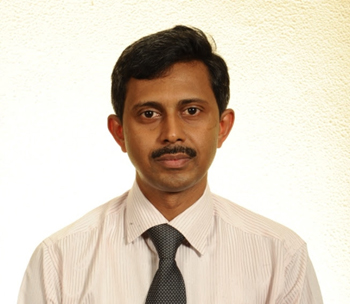
A Karnataka doctor spearheads fight against Nipah
Mangalore Today News Network
May 23, 2018: Microbiologist Dr G Arunkumar, is spearheading the forefront of the fight against the outbreak of the deadly Nipah virus in the country, insists that there is no need to panic as measures to control its spread have been put in place. Arunkumar, who heads the Manipal Centre for Virus Research (MCVR) under Manipal Academy of Higher Education in Karnataka, is working in Nipah-hit areas of Khozhikode, Kerala, and communicates and coordinates with the medical community and the state government.
 Arunkumar, who was instrumental in diagnosing the second patient with the Nipah virus, believes the virus was detected fairly early. This, he says, will prove crucial in containing it, although there are only two labs — National Institute of Virology, Pune and MCVR — that are equipped with the bio safety level -3, the advanced standard of safety in labs, which is essential to handle a rare and highly infectious virus like Nipah.
Arunkumar, who was instrumental in diagnosing the second patient with the Nipah virus, believes the virus was detected fairly early. This, he says, will prove crucial in containing it, although there are only two labs — National Institute of Virology, Pune and MCVR — that are equipped with the bio safety level -3, the advanced standard of safety in labs, which is essential to handle a rare and highly infectious virus like Nipah.
Arunkumar, who completed his early medical studies in his native Thiruvananthapuram, but who works in Karnataka, told media: “The infection was launched from one person in a house in Khozhikode and spread among family members. The other cases occurred in the hospital where the family was treated. Now, all precautions have been taken to prevent hospital-based infection. These efforts have been taken up by the community too.”
Arunkumar revealed the virus would have been detected immediately had not the first patient died before a test could be conducted. A sample of body fluids such as a throat swab, blood, urine and cerebral spinal fluid is needed to conduct a test. This was obtained from the second patient and sent to the Manipal lab. The results were out in less than 12 hours from the time the lab received the samples. Once the samples showed positive for Nipah, the medical community was put on high alert.
“The first patient died suddenly and we could not test,” Arunkumar said. “The second patient from the same family was admitted on May 17 and we obtained and tested a sample of the patient’s body fluids on May 18. Once the results were out, we realised we were dealing with a rare virus. Unfortunately, the second patient died, but an epidemiological link between the two cases was proven.”
Arunkumar claims the virus is highly infectious and the ones at the greatest risk are the staffs treating the patient in the ICU. “When the patient is in ICU, the body fluid secretions and airborne infections are more,” he said. “So the risk of transfer increases greatly. That is why hospital staffs are most vulnerable to infection.”
Past research work of Arunkumar, who heads MCVR and leads the Regional Reference Laboratory for Influenza viruses established by the Government of India, includes epidemiological studies on respiratory syncytial virus infection in children and the prevalence of measles and cytomegalovirus infection in pregnant women, influenza, viral encephalitis and dengue among others.